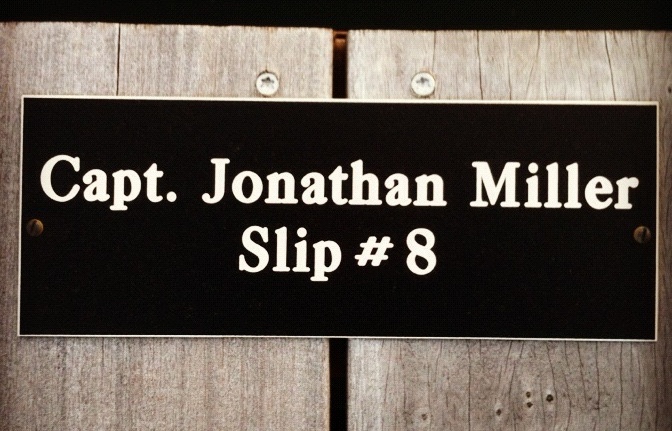- 2023 Had The Most Natural Disasters Over $1 Billion (infl.-adj.) In U.S. History
- One In Five Households Financially Impacted By U.S. Natural Disasters
- Homeowners And Renters With Lower Incomes Are Most Affected
My last direct overlap with a natural disaster was Hurricane Sandy back in 2012. My wife and I went down to the Long Island Sound to say goodbye to our beloved boat 12 hours before the lunar high tide. The water in the parking lot was already up to our knees when we said goodbye. We expected the dock to slip above the pilings when the water level rose further and then float away with our boat. Thankfully, when we came back 24 hours later, our boat was still there and unscathed. The dread we felt about potentially losing something we loved didn’t begin to compare to those who lost their homes or family members. We lost trees, and powerlines blocked the road. The storm was just a precursor to future catastrophic events that will get baked into housing values.
Our marina boldly displayed our names on each of the members’ boat slips.

But I digress…
Here are the top 5 most expensive U.S. natural disasters. Hurricane Sandy checked in at number 5.

Natural disasters in excess of $1 billion, adjusted for inflation, are expanding, as evidenced in the following infographic. The frequency of events is rising, and as a result, the cost of insurance is increasing, too.

One In Five Households Financially Impacted By Natural Disasters
Freddie Mac has a great piece in their September newsletter that analyzes the growing impact of natural disasters: Spotlight: Natural Disaster Threat. Here are three key points from their analysis.
– Natural disasters are impacting location choice, especially for renters…

– Homeowners affected by natural disasters are shifting emphasis to improvements that reduce risk…

– Some households are purchasing more insurance…

Homeowners And Renters With Lower Incomes Are More Affected
About a decade ago, I was part of an Urban Land Institute study that examined flooding in Norfolk, Virginia. The area has been doubly impacted because both water levels are rising on the Chesapeake Bay, and the land (silt) is sinking. Back in 2014, the mayor was in denial and skipped our team’s public presentation to the city government. Thankfully, the city has become more proactive.
At the time, we interviewed more than 70 stakeholders, many of which had seemingly adjusted by using pretzel logic to adapt to the constant flooding. Also, we found that the areas most exposed to flooding tended to be occupied by residents with lower incomes. Think of the 9th Ward in New Orleans during Hurricane Katrina.

Here are a couple of 2014 Norfolk, Virginia stories I heard first-hand from stakeholders during our Norfolk, Virginia research that really amazed me.
- An institution whose building gets flooded every time it rains at high tide found a solution – issuing hip boots to all employees and, most importantly, issuing canoes to crucial personnel like the technology staff. The flood waters contained a mixture of fresh Chesapeake Bay water and Atlantic Ocean salt water, so their employees’ cars could not park in the designated parking lot or risk being severely damaged by salt.
- An adjacent residential condo had no access to or egress from their complex during high tide when it was raining and risked exposing their cars to salt water during tide changes. Saltwater and metal are not a good combination.
A FUN ASIDE
To take a break from this corrosive-themed blog post, think of another natural disaster, like this fun garage rock “natural disaster” song by Mike Krol.
MARKET AWAKENING FROM HIBERNATION? | A live interview with appraiser extraordinaire Jonathan Miller on the current state of the NYC market
CLICK HERE OR THE IMAGE BELOW TO REGISTER FOR THIS LIVE WEBINAR

Did you miss yesterday’s Housing Notes?

September 24, 2024
Creating Phantom Co-op Prices To Distort Public Record Is Unethical
Image: ChatGPT
Housing Notes Reads
- Spotlight: Natural Disaster Threat [Freddie Mac]
- Climate change doubles chance of floods like those in Central Europe, report says [Reuters]
- Are major natural disasters increasing? [USA Facts]
- Stromberg v East Riv. Hous. Corp. [Justia]
Market Reports
- Elliman Report: Manhattan, Brooklyn & Queens Rentals 8-2024 [Miller Samuel]
- Elliman Report: New York New Signed Contracts 8-2024 [Miller Samuel]
- Elliman Report: Florida New Signed Contracts 8-2024 [Miller Samuel]



![[Podcast] Episode 4: What It Means With Jonathan Miller](https://millersamuel.com/files/2025/04/WhatItMeans.jpeg)